Celebrating the romance of travel for 30 years: Ho Kwon Ping
Sign up now: Get ST's newsletters delivered to your inbox
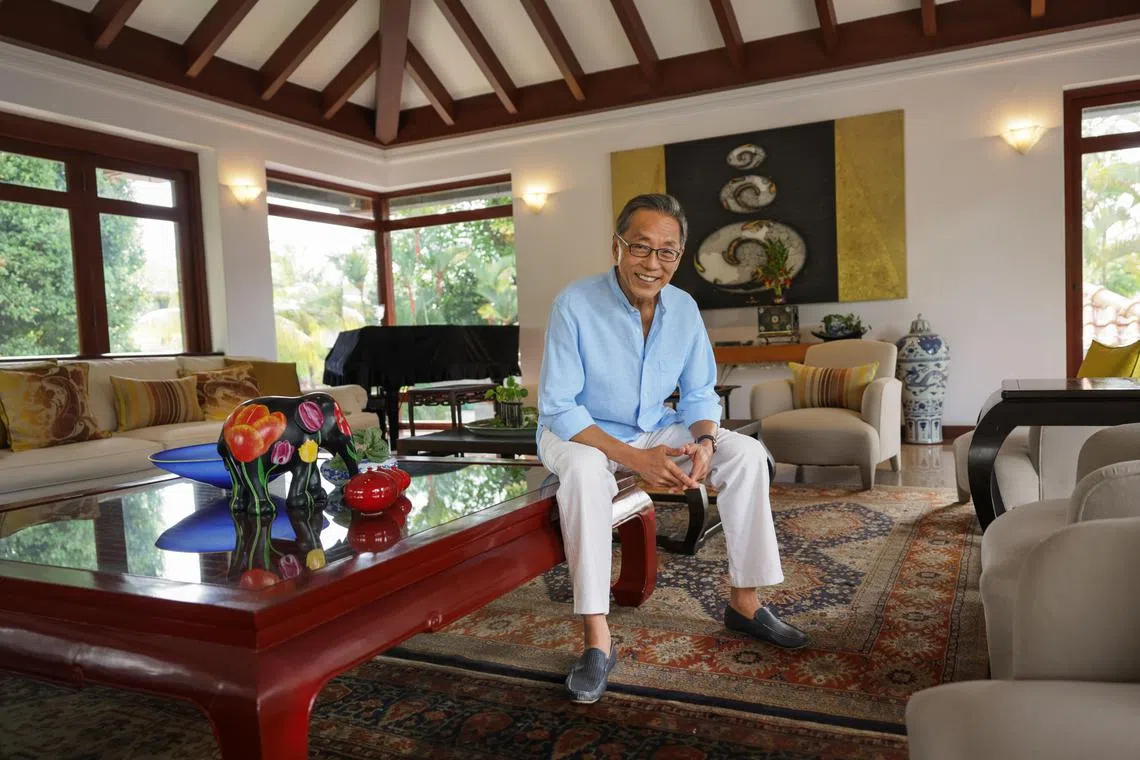
Banyan Group founder Ho Kwon Ping at his Bukit Timah home.
ST PHOTO: GIN TAY
Follow topic:
SINGAPORE – Hotelier and developer Ho Kwon Ping has channelled his headstrong nature into creating bold hospitality brands designed to induce “retinal pleasure” at first glance.
Since its inception in 1994 with the first Banyan Tree Resorts brand in Phuket, the Singapore-based group has carved out a niche for itself as a design-led Asian hospitality brand centred on the romance and intimacy of travel.
Its superpower? Being able to capture the imagination with lush, eco-conscious properties designed with a strong sense of place.
This can be seen in the Banyan Tree Alula desert resort, featuring a cluster of tented houses in Saudi Arabia, which was launched in 2022; and its first managed hotel in Singapore, the upcoming Mandai Rainforest Resort in Mandai,
The Banyan Group has more than 80 properties across the world. The total asset value of the hotels that it owns is about $700 million, while the total sales revenue of all its hotels – managed and owned – is about $1.1 billion a year.
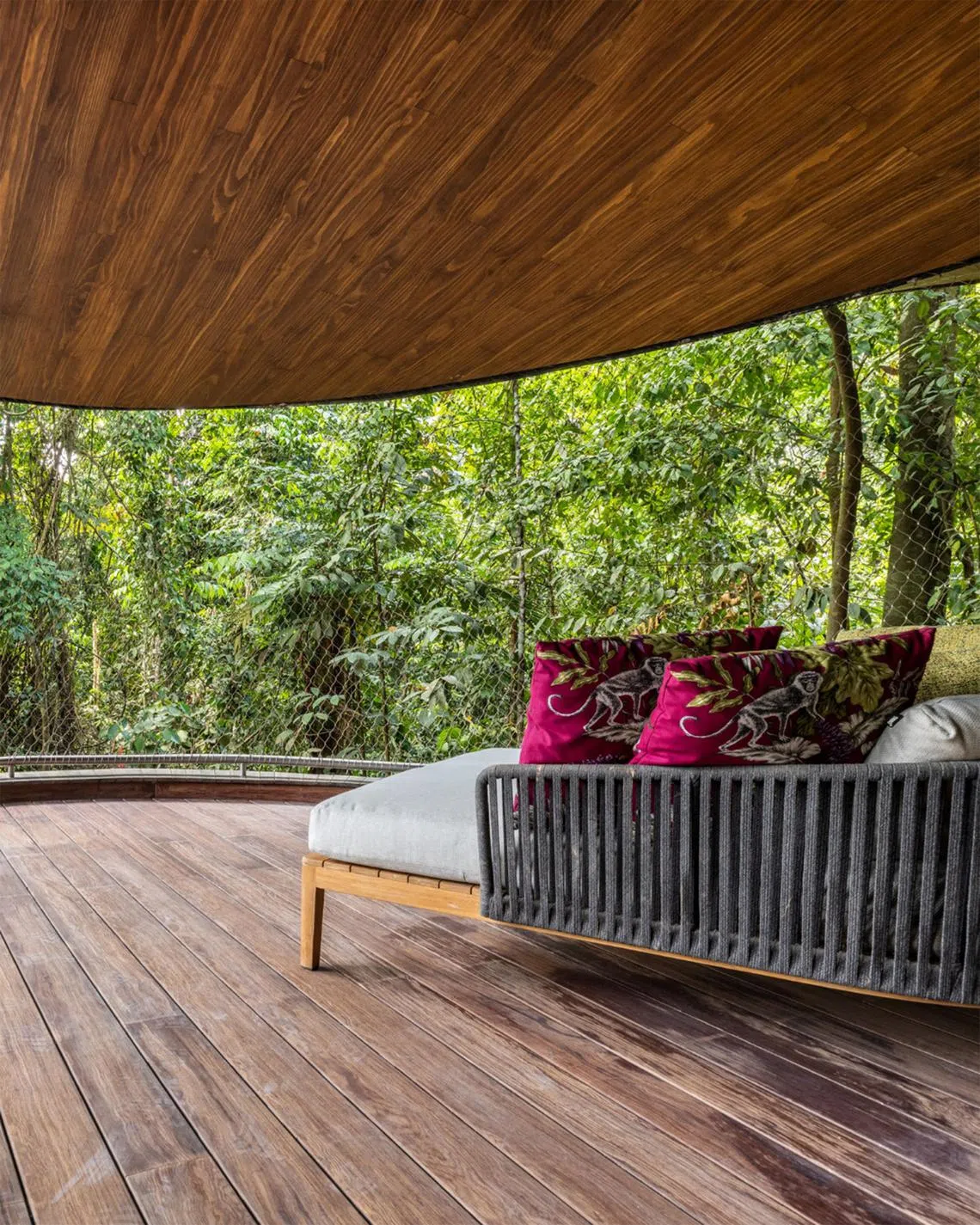
Biophilia will feature prominently in the Mandai Rainforest Resort’s architecture, design and experiences.
PHOTO: BANYAN GROUP
Banyan’s homecoming with Mandai treehouses
The group, which celebrates the 30th anniversary of the Banyan Tree brand in 2024, is expecting the Mandai resort to be its 100th project when it opens in 2025.
Mandai Rainforest Resort, which is owned by Mandai Wildlife Group, will have 24 treehouses shaped like seed pods and another 338 hotel rooms.
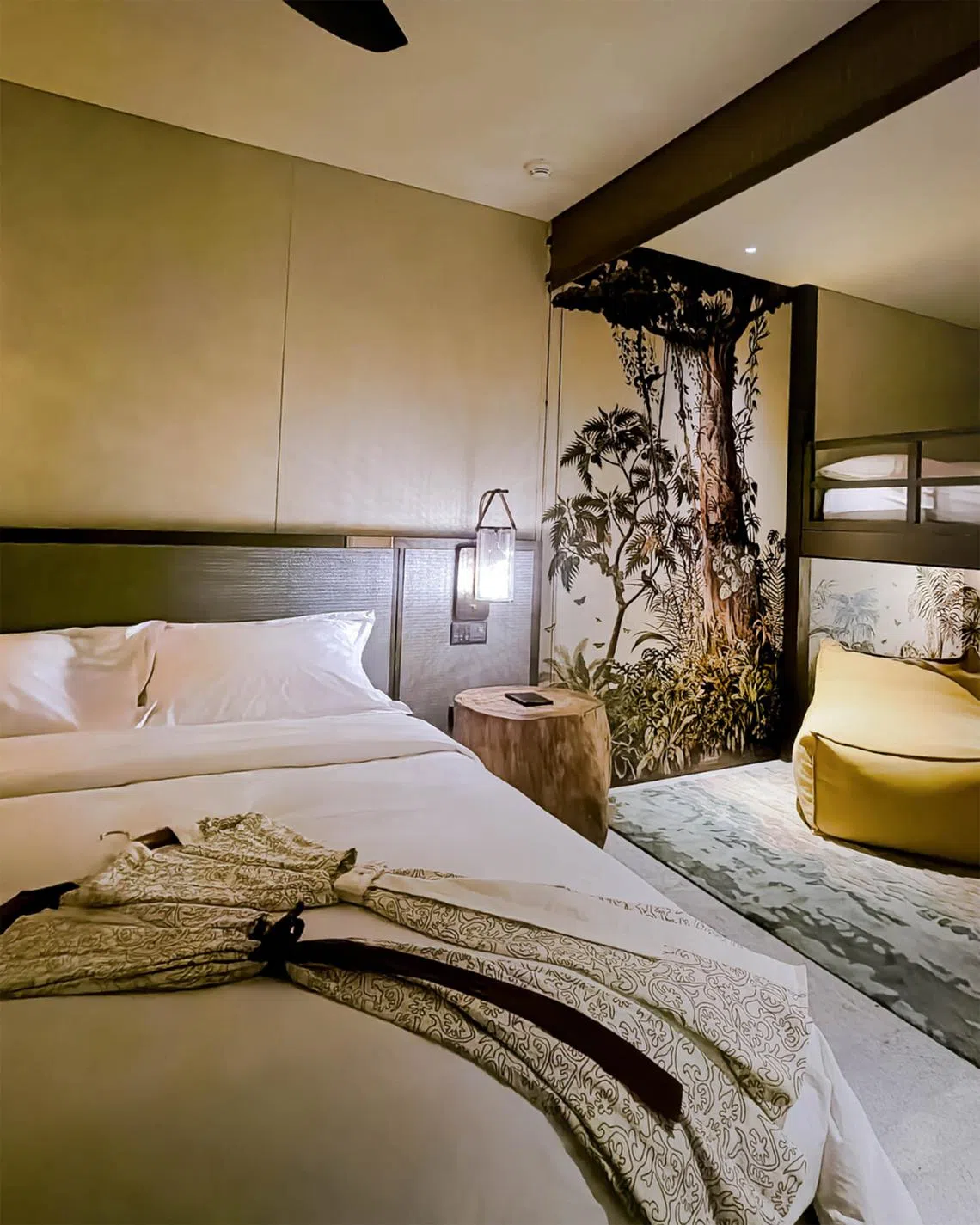
Mandai Rainforest Resort, which is owned by Mandai Wildlife Group, will have 24 treehouses and 338 hotel rooms.
PHOTO: BANYAN GROUP
Drawing inspiration from the group’s legacy of celebrating the location that its developments are set in, biophilia will feature prominently in the Mandai Rainforest Resort’s architecture, design and experiences.
Mr Ho, co-founder and executive chairman of home-grown hospitality company Banyan Group, also recently launched two new residential developments for international sales that are being built in Phuket: Laguna Lakelands and Garrya Residences. These are slated for completion by 2027.
“The launches of our residential projects show the paradigm shift that travellers and home-buyers are seeing in Phuket,” the 72-year-old tells The Straits Times in an interview at his home in Bukit Timah.
The resort-style landed property was designed by his younger brother Ho Kwon Cjan, 68, in 1994 – the year the first Banyan Tree resort opened in Phuket. The younger Mr Ho, who is now semi-retired, also designed most of the Banyan Tree properties until a few years ago.
The newer properties are now drawn up by local and global firms with strengths in resort architecture and urban planning.
Mr Ho Kwon Ping is married to Ms Claire Chiang, 73, Banyan Group co-founder and a former Nominated Member of Parliament. The couple have three children and five grandchildren.
He says Phuket has become more than just a draw for sun-worshipping tourists.
“From being a great place to visit to a great place to live in, Phuket is seeing growing demand not only as a second home but also as a primary residence,” he says.
“Good-quality residences are still significantly cheaper in Phuket than in most of the buyer source markets such as Singapore, Hong Kong or Europe.”
In less than four months since its launch, 40 per cent of the 320 units in Phase One of Laguna Lakelands’ waterfront condominiums and villas have been sold.
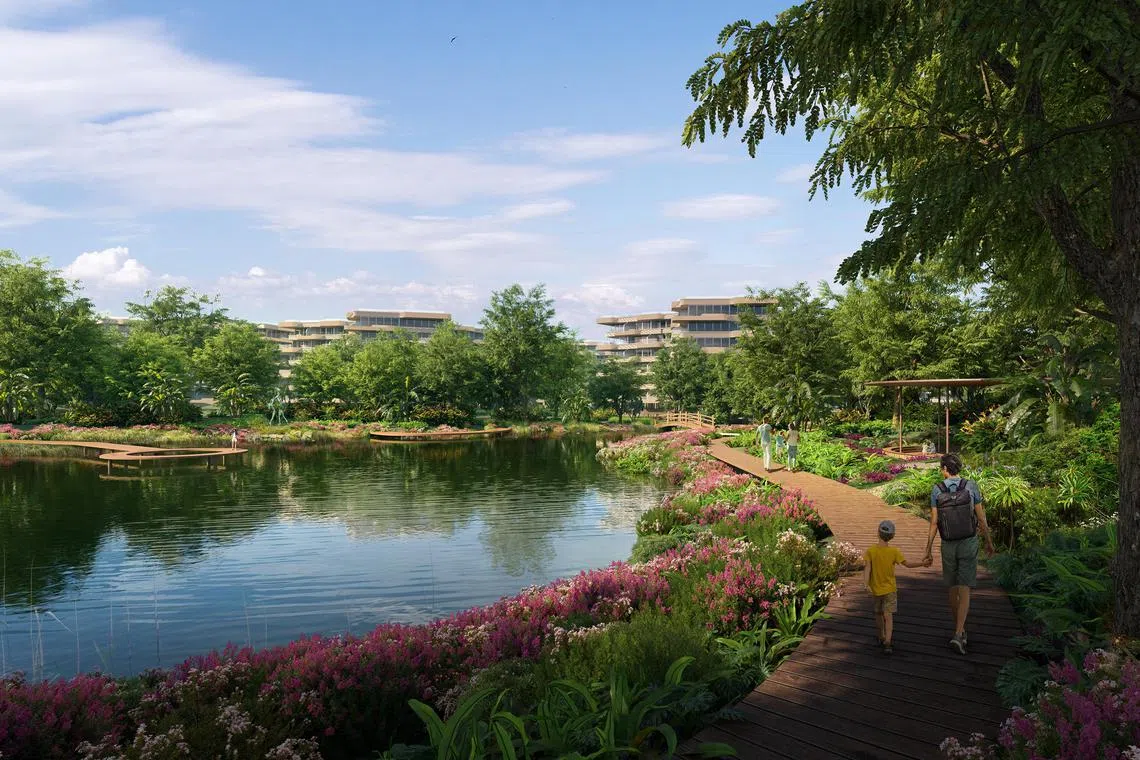
An artist's impression of the upcoming Laguna Lakelands urban development project in Phuket.
PHOTO: BANYAN GROUP
The entire development – housing more than 6,000 units and valued at about $2.7 billion – comprises five distinct precincts totalling 100ha.
The old dictum about “location, location, location” when it comes to building a resort or residential complex is still paramount.
“The first thing we look for in a site is the wow factor,” says Mr Ho. “That quality of evoking romance and intimacy is what distinguishes a Banyan Group site from destinations built by other hospitality players.”
Total privacy
One anecdote Mr Ho likes to share is about Banyan Tree Phuket’s private villa pool, a concept he pioneered in 1994. It is designed for the total privacy of guests.
“When my mother, who was widowed 25 years ago, visited Banyan Tree Phuket, she said she was ‘tickled pink’ to be able to skinny-dip in the villa pool,” Mr Ho reminisces with a glint in his eye.
Mr Ho’s late mother, Madam Li Lienfung, was a prolific writer, philanthropist and supporter of the arts. She married Mr Ho Rih Hwa, an economist, businessman and diplomat who worked in Thailand, Germany and the European Union.
The couple had three children. Their eldest daughter, Ho Minfong, 73, is a writer of young-adult books, some of which are required reading in Singapore schools.
“For a widow in her 80s – as for all romantic couples – a private pool away from prying eyes can be quite an intimate experience,” says Mr Ho.
After Mr Ho’s team of architects and engineers has settled on the location for a resort or residential complex, the next step is building a structure that enhances the site and respects the surrounding environment.
“We built the Banyan Tree Lijiang resort in 2006 in the Chinese town of Lijiang, featuring villas inspired by architecture of the ancient Chinese Naxi kingdom,” recounts Mr Ho.
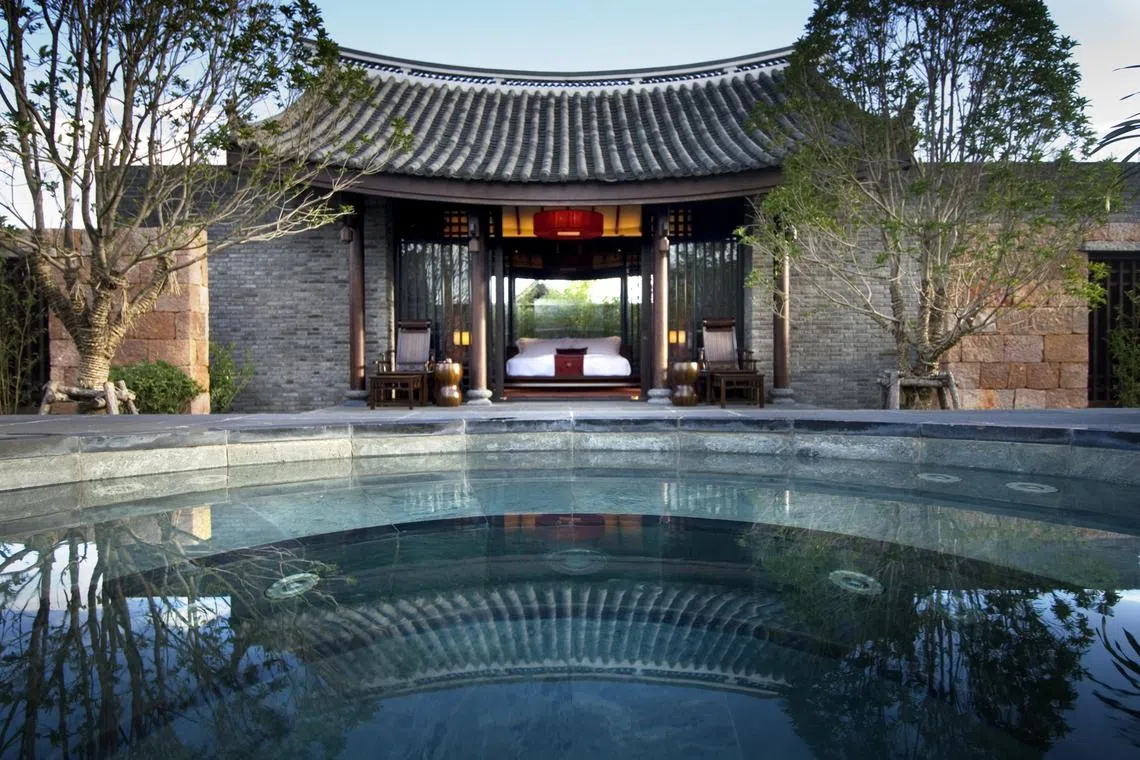
The Banyan Tree Lijiang resort features villas inspired by architecture of the ancient Chinese Naxi kingdom.
PHOTO: BANYAN GROUP
The hotel in the Old Town of Lijiang, in south-west Yunnan province, is a five-star resort located 2,400m above sea level.
The area was designated a Unesco World Heritage Site in 1997, as archaeological evidence shows that it dates back to the 12th century and is where the Silk Road in the south joins other ancient highways.
The Old Town of Lijiang became an important centre for the economic and cultural communication between various ethnic groups such as the Naxi, Han and Tibetan peoples.
The Banyan Tree design ethos, says Mr Ho, is centred on accentuating a sense of place.
The group’s 12 global hospitality brands, including the flagship Banyan Tree in 1994, are held together by the tangible as well as intangible aspects of design.
The resort as a grand stage
“Hospitality design today is more than just about architecture,” says Mr Ho. “It has evolved into a holistic experience which starts with the stage – the hotel – for all the drama that will unfold during a guest’s stay.”
The drama is the user experience – the intangible aspect of design – that is crafted around the guest from the moment the hotel room key is given.
Putting in place a strong service culture is a hallmark of the group’s many hotels and residences.
“I tell the architects I work with that a resort should be designed like a grand stage where we, the hotel associates, are the production managers who help the ‘actors’ – our guests – act out their drama through their daily interactions,” quips Mr Ho.
“What comes out of the experience, be it reviews on Tripadvisor or candid photos uploaded on Instagram, then becomes part of the evolving literature of the resort.
“And these are writ large on social media for future guests to explore with us.”
Run-ins with the law
While talking about his plans for taking the Banyan Group into the future, Mr Ho is also mindful about his past, which he says has helped him see the road ahead with greater clarity after several missteps.
In his student days in the 1970s, at Stanford University in the United States, Mr Ho had the first of several run-ins with the law as a passionate activist and protester.
His knack for getting into trouble continued when he worked for the Hong Kong-based Far Eastern Economic Review magazine as a journalist who penned some news stories that were critical of the Singapore Government.
He later became a combat engineer in the Singapore Armed Forces during national service and went on to become a founding chairman of Singapore Management University, Singapore’s third university, in 1997.
Mr Ho compiled his speeches and writings in Asking Why, a 528-page book which was published by The Straits Times Press in 2018, as a public intellectual who asked questions about various issues around him, but rarely got clear answers.
He is also the subject of a new book, Behind The Banyan: Ho Kwon Ping On Building A Global Brand, written by Aaron Low, a partner at local content and communications agency The Nutgraf. The 288-page paperback, published by World Scientific Publishing, gives insights into Mr Ho’s experiences, including how he parlayed Banyan Tree into a global hospitality brand.
From design to urban planning
Mr Ho is excited about what he and his team are creating in Laguna Lakelands.
“We have not done anything on such a grand scale where we create spaces for both the public and the gated community to come together,” he says.
The Banyan Group’s Laguna Lakelands, located on the central west coast of Phuket, is under construction next to the sprawling Laguna Phuket integrated resort, also owned by the group. It is said to be the largest development of its kind in Asia, covering about 404.7ha, and was launched in 1987.
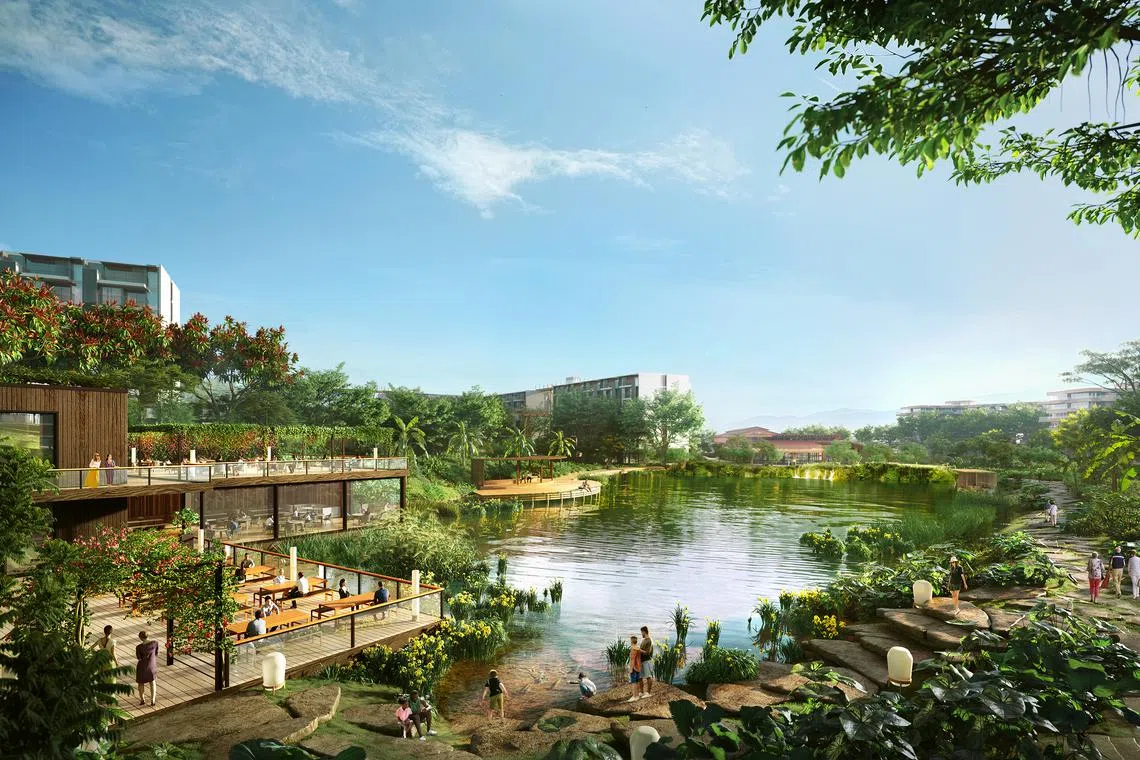
The Banyan Group’s Laguna Lakelands is under construction next to the sprawling Laguna Phuket integrated resort.
PHOTO: BANYAN GROUP
The adjacent Laguna Lakelands, which span more than 111.7ha of botanical gardens, parks, rainforest, lagoons and undulating hills, will be home to Phuket’s largest private residential community.
The group has commissioned local and international firms with credentials in sustainability to create public parks with 15km of public biking and hiking trails, and a rainforest reserve within the property.
A member of the team will be Henning Larsen, an award-winning multidisciplinary design firm which worked on the redesign of the 62ha Bishan-Ang Mo Kio Park in Singapore, transforming it to also function as a giant storm drain during extreme downpours.
The first phase of the Laguna Lakelands residences, which start at 7.7 million baht (S$285,500) is available in one- to three-bedroom units. Condominiums are located in four- and seven-storey complexes with rooftop infinity pools.
The complex also has four-bedroom units called Waterfront Villas with private pools and gardens, featuring a built-up area of about 5,600 sq ft.
Another property that was launched in May in Singapore for advance sales is Garrya Residences, located within Laguna Phuket integrated resort on the central west coast of Phuket.
The beachfront wellness development, which is expected to be completed in 2027, will have 38 two-bedroom apartments, plus penthouses with a private rooftop pool.
With prices starting at about 34 million baht, the retreat boasts tropical wellness amenities such as flowing waterscapes, a jungle pool, a contemplation pond and spa treatment zones.
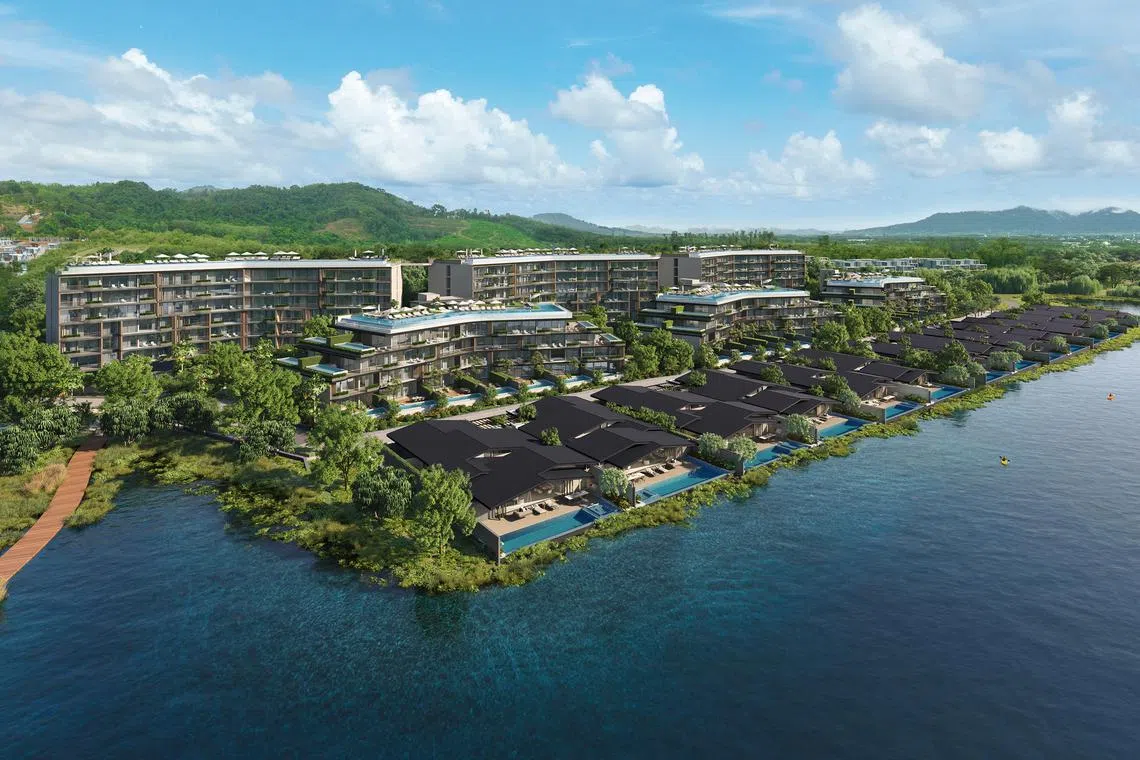
An aerial view of Laguna Lakelands, which will have 6,000 units in Phuket’s Bang Tao Bay area.
PHOTO: BANYAN GROUP
The group’s commitment to sustainable travel and elevating the guest experience is aligned with forces shaping the industry.
According to American multinational strategy and management consulting firm McKinsey & Co, in a 2023 report titled The Hotel Of The Future, wellness and spa facilities, tech innovations and eco-conscious development are expected to be the main drivers of hospitality in the hotels of the 2030s and beyond.
The report says younger generations “want their hotels to reflect the environment and the location in which they are physically situated”.
It adds that guests will look for guarantees that they are in places that respect the environment. Sustainability will be a determining factor that separates winning hotels and developments from those that do not make the cut.
“(Travellers) will be more demanding. The demand for sustainability will cover everything – the materials from which hotels are built, the way the food is processed and served, and so on,” says the McKinsey report.
Mr Ho says that as the group grows, it needs to build a strong corporate culture that binds teams in different parts of the world together with a common vision.
“Our idea of getting everyone on the same page is empathy,” he adds.
He credits his wife, who chairs the Banyan Tree Global Foundation, for developing the I Am With You programme, which recognises emotional connection as a key touch point between the group’s associates and colleagues as well as guests.
The programme emphasises egalitarian service interactions instead of organisational hierarchy.
It contributes to the well-being and cohesion of the global teams and connects guests with Banyan Tree associates, helping to define the group’s service culture.
Mr Ho says: “With empathy woven into our daily interactions, we can not only grow as a dynamic resort group but also take care of one another, which is at the heart of hospitality.”
The Banyan branches out
Hospitality design has seen rapid changes in the last few decades as hotels, resorts and branded residences around the world compete to draw travellers and buyers.
Global industry publications such as Hospitality Design Magazine and Hotel Management have charted the evolution of hospitality design from basic room stays in the pre-internet era before the mid-1990s to wellness and eco-conscious rooms and branded residences catering to savvy customers with high expectations of service and amenities.
Besides hotels, the Banyan Group’s branded residences are also in high demand.
Branded residences are a form of real estate that offers higher levels of service compared with standard condominiums. It combines ownership with the service and amenities of a Banyan Tree hotel.
Here are some of the Banyan Group’s ground-breaking projects.
1. Banyan Tree Phuket
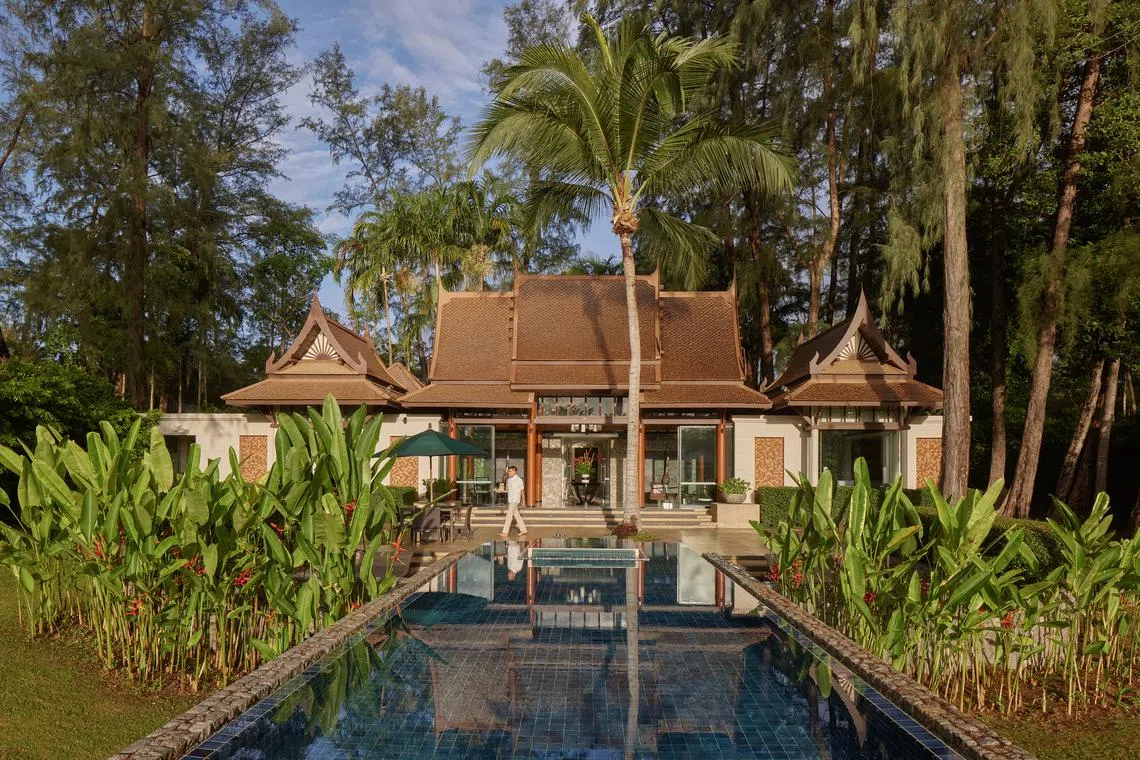
Banyan Tree Phuket has 218 villas designed to immerse travellers in Thailand’s rich cultural heritage, along with modern amenities.
PHOTO: BANYAN GROUP
The group celebrates 30 years in hospitality in 2024. Its first Banyan Tree Phuket hotel opened its doors in 1994 as a luxe boutique hotel with 86 villas.
The resort now has 218 villas designed to immerse travellers in Thailand’s rich cultural heritage, along with modern amenities.
Inspired by the Ficus benghalensis or Indian banyan, which is native to tropical Asia, the group crafted its brand around what the tree represents. Its branches are spread out and its leaves provide shade. It is a haven for biodiversity and weary travellers seeking sanctuary.
This is in line with how the Banyan Tree brand of hotels and properties are designed to offer experiences steeped in the Asian style of hospitality.
The Banyan Tree design philosophy spawned the group’s newer hospitality brands, such as Angsana, Cassia and Garrya, which are all named after trees.
2. Banyan Tree Residences Hillside Dubai
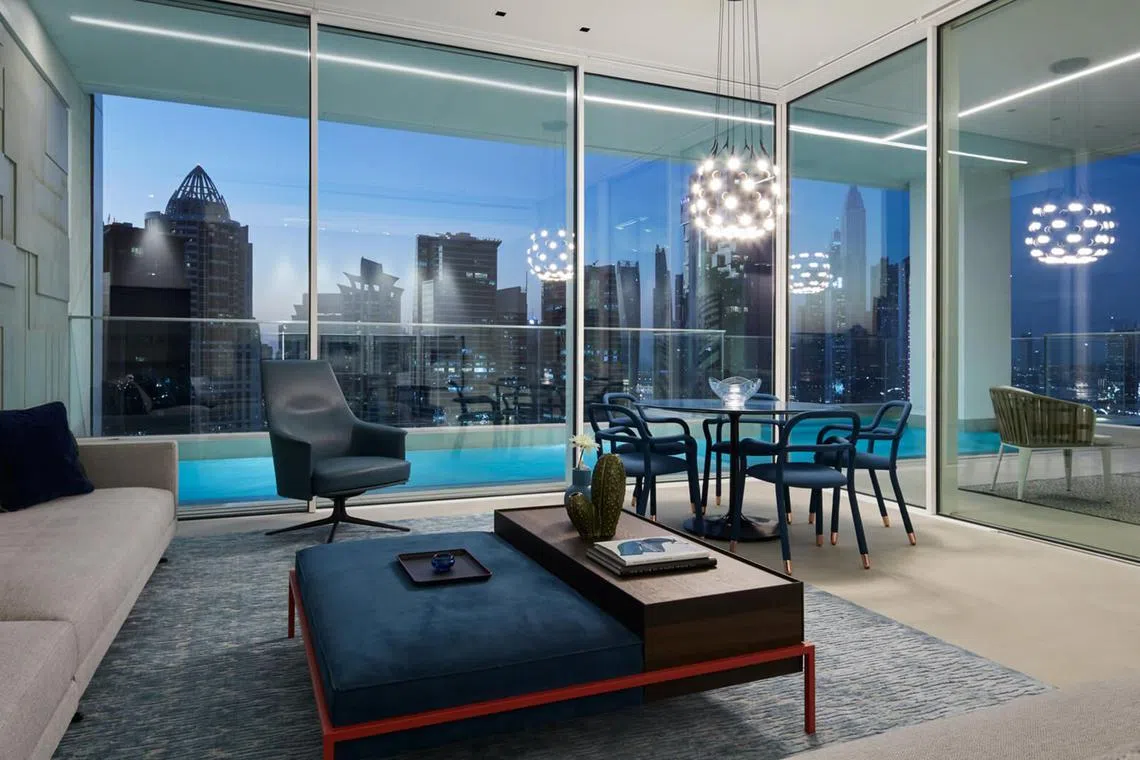
Banyan Tree Residences Hillside Dubai has 244 luxury apartments.
PHOTO: BANYAN GROUP
The resort-style residential project was launched in 2019 offering 244 luxury apartments in a premier location in Dubai, in the United Arab Emirates.
Besides high-end fixtures and furnishings, the residences have a spa with Banyan Tree massage therapists for residents, complimentary weekly yoga classes, a community clubhouse with a gym, children’s play areas, tree-lined lawns and a 32m infinity pool with a poolside cafe.
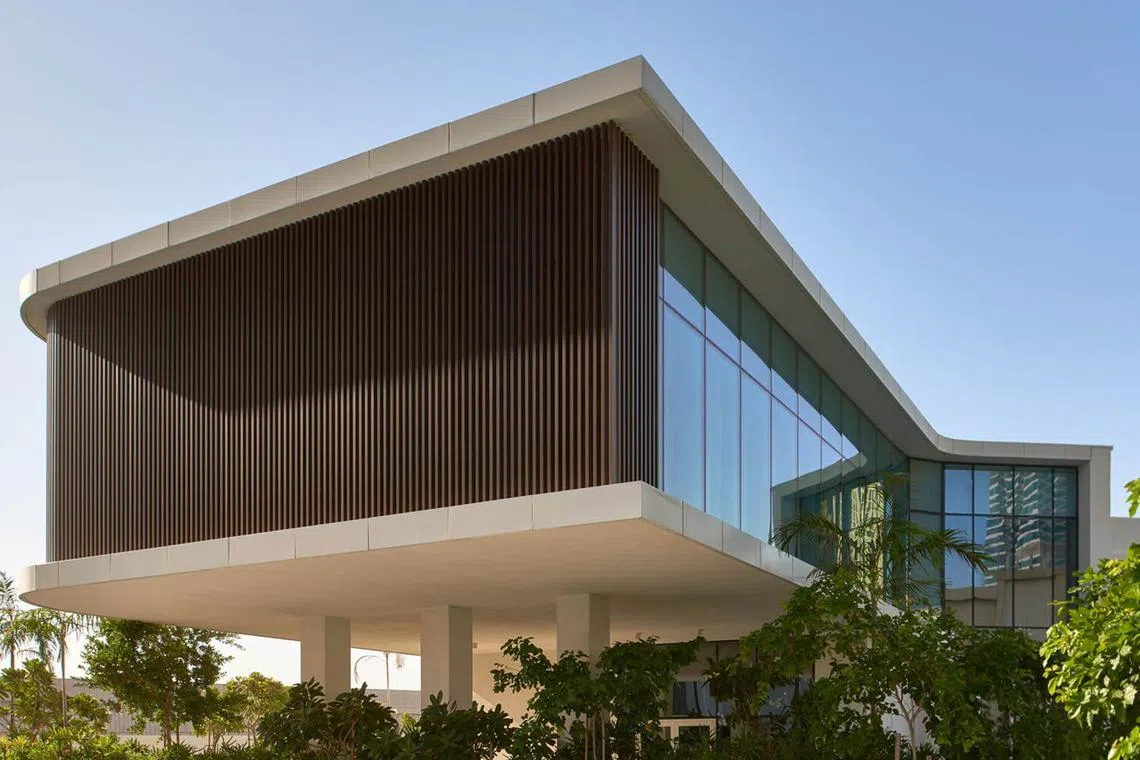
Banyan Tree Residences Hillside Dubai includes a community clubhouse.
PHOTO: BANYAN GROUP
Apartments range from one- to four-bedroom units, as well as garden duplexes and full-floor penthouses.
3. Garrya Nijo Castle Kyoto
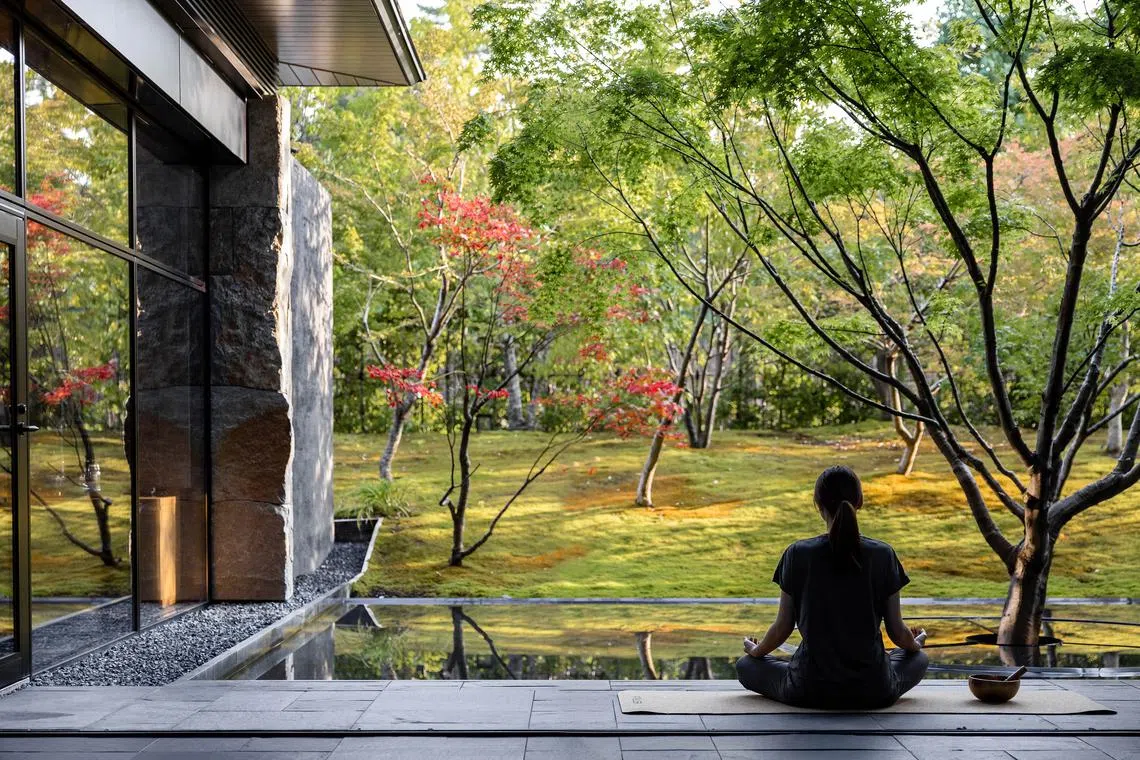
The Banyan Group’s Garrya Nijo Castle Kyoto hotel demonstrates the group’s new approach to hospitality, which is focused on well-being through curated design and amenities.
PHOTO: BANYAN GROUP
The Banyan Group’s Garrya concept – also named after a tree – was first applied to the Garrya Nijo Castle Kyoto hotel, demonstrating the group’s new approach to hospitality that is focused on well-being through curated design and amenities.
The 25-room hotel was launched in 2022 and is located opposite Japan’s Nijo Castle, a Unesco World Heritage site built in 1603 during the Tokugawa Shogunate.
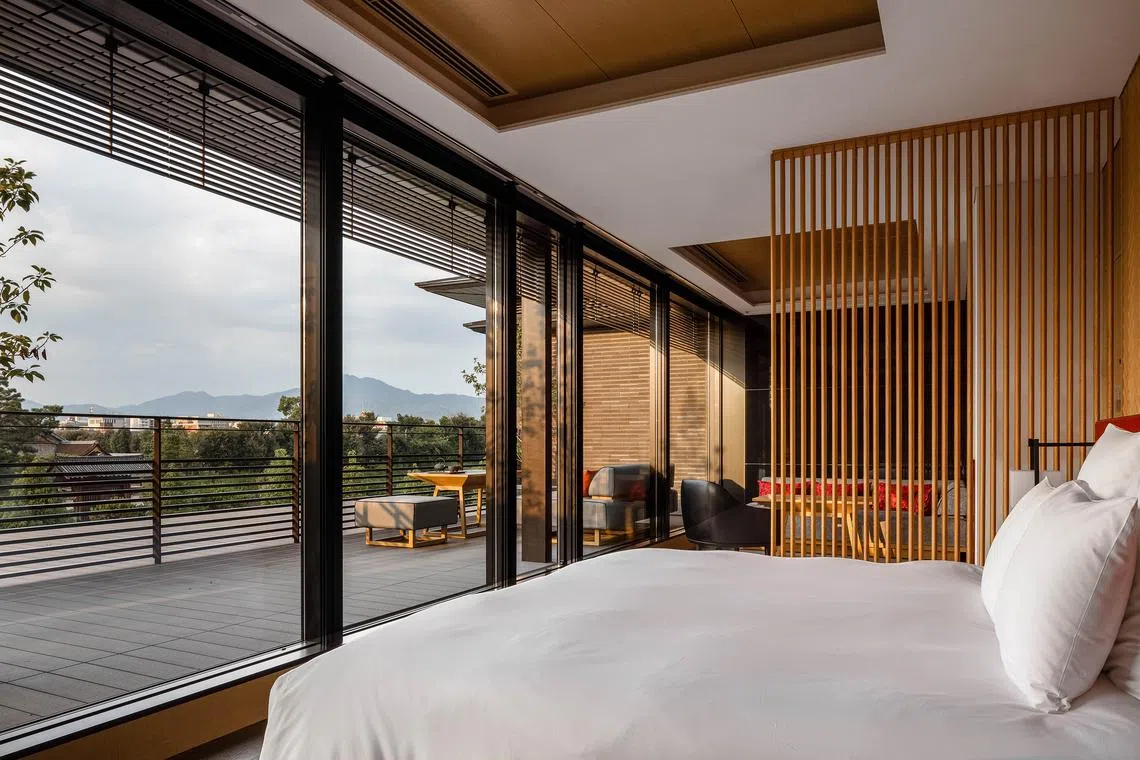
Each room in Garrya Nijo Castle Kyoto is designed to pay homage to Kyoto’s history.
PHOTO: BANYAN GROUP
Each room is designed to pay homage to Kyoto’s historic past while showcasing its tech-forward present with little touches, such as an in-room tablet that offers online well-being experiences including yoga classes and soothing music to aid sleep.
4. Banyan Tree Alula
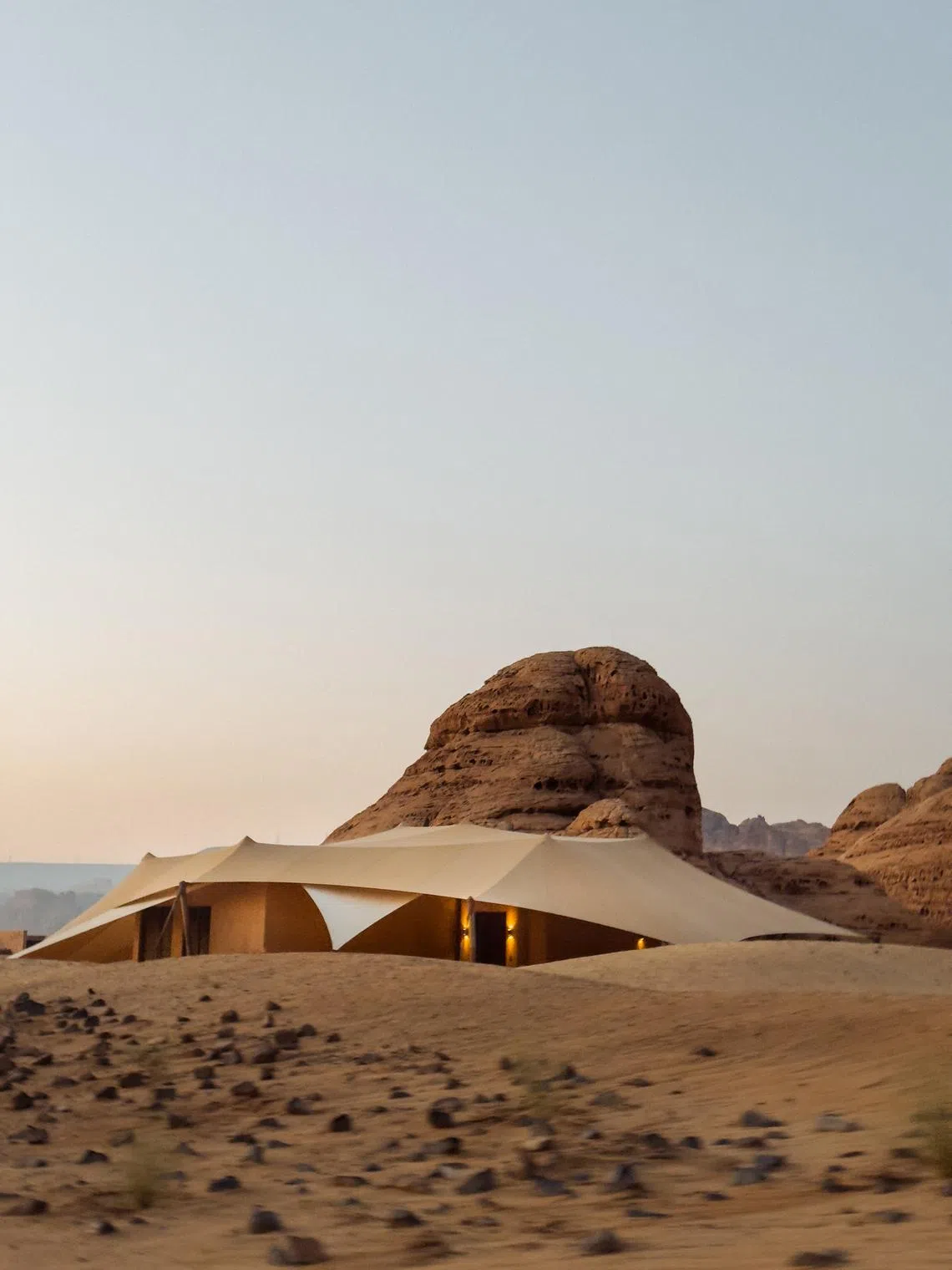
The Banyan Tree Alula desert resort in Saudi Arabia features 47 tented villas with high ceilings and canopy tents designed to blend in with the surrounding dunes.
PHOTO: BANYAN GROUP
Launched in 2022, Banyan Tree Alula is the Banyan Group’s first property in Saudi Arabia.
It features 47 tented villas with high ceilings and canopy tents that are designed to blend in with the surrounding dunes.
The group’s “sanctuary for the senses” concept found favour with the Saudi Arabian government, who wanted to develop the site in a way that would be sensitive to the area’s history and culture.
Inspired by the nomadic nature of Nabataean architecture, the all-villa, tented resort illustrates the group’s commitment to a “sense of place”.
Besides customised “in-villa” services offered on-site, there are also “in-valley” programmes that take guests outdoors for massage treatments and nomadic chefs’ cuisines.
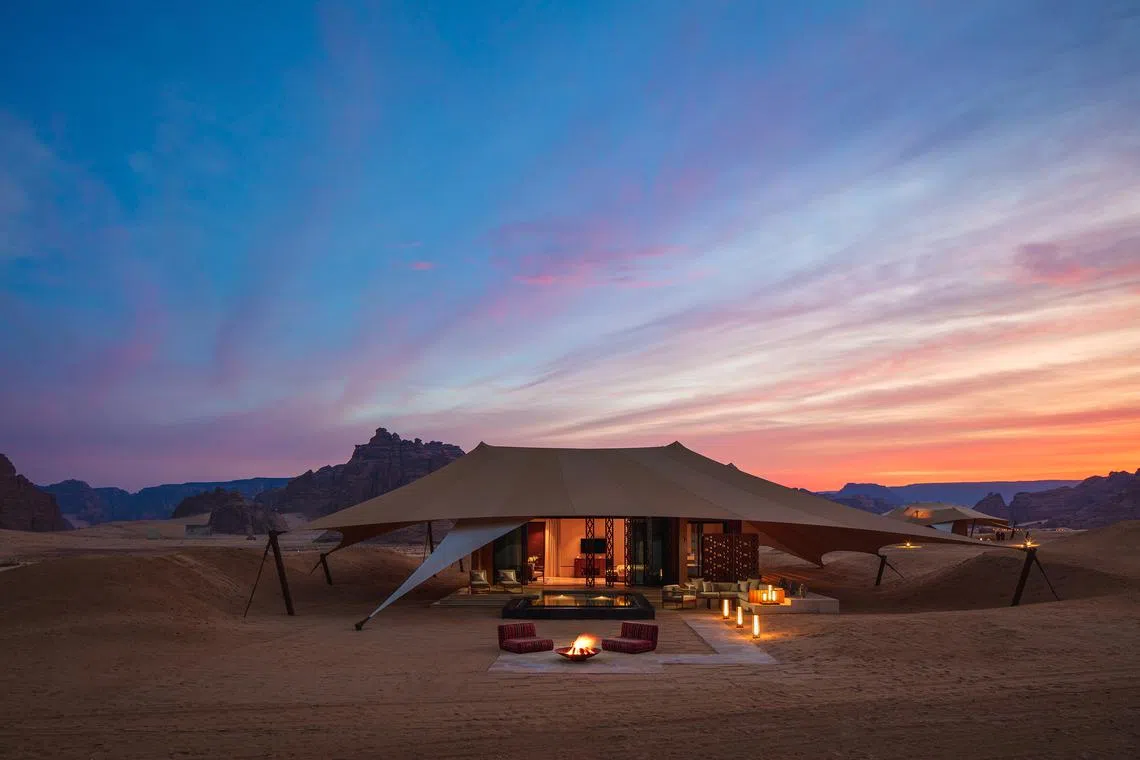
Inspired by the nomadic nature of Nabataean architecture, the Banyan Tree Alula resort illustrates the group’s commitment to a “sense of place”.
PHOTO: BANYAN GROUP
A special “en-voyage” programme allows guests to visit artisan villages and go on adventure excursions.
5. Laguna Lakelands
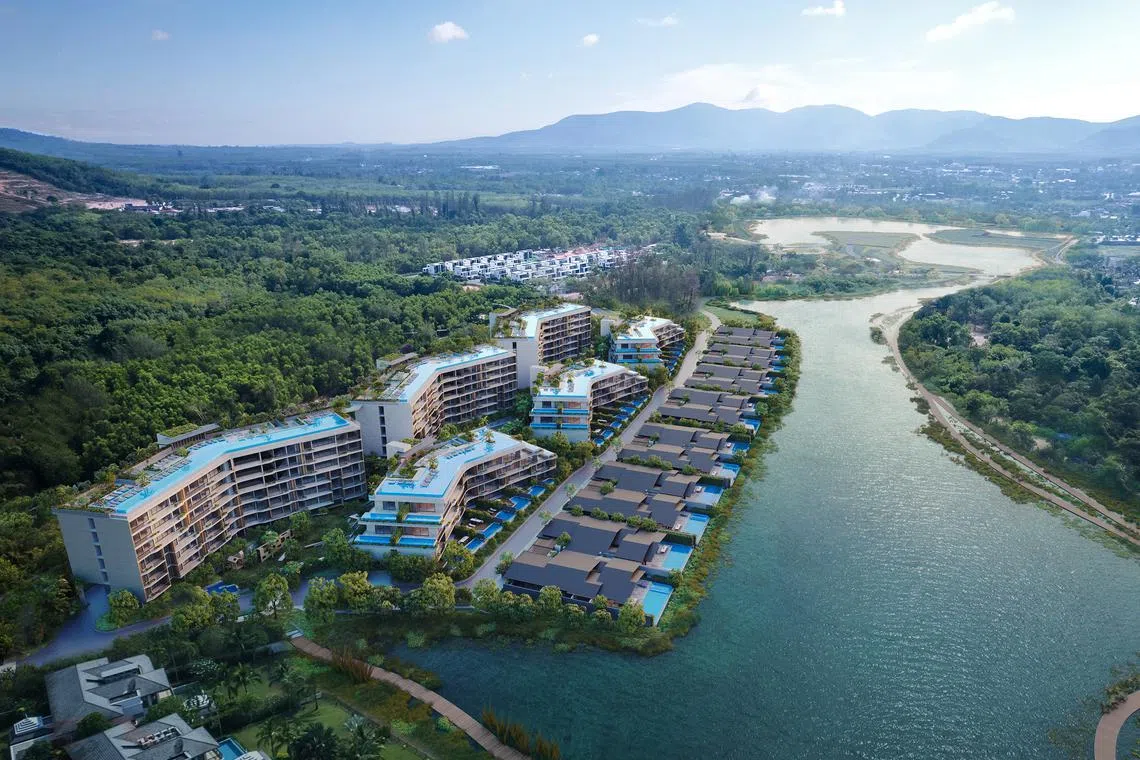
Laguna Lakelands will have 6,000 units in Phuket’s Bang Tao Bay area.
PHOTO: BANYAN GROUP
Billed as Phuket’s largest private residential community, the $2.7 billion Laguna Lakelands includes public spaces, blurring the lines between gated community and public space.
The project, which is expected to be launched in 2027, will have 6,000 units – including condominiums and villas – in Phuket’s Bang Tao Bay area.
It is expected to benefit from post-pandemic visitor numbers as global buyers look to invest in holiday homes.
Phuket’s pristine beaches and frenetic nightlife are being compared with those of Ibiza, Spain’s party capital. Tourist arrivals are expected to reach 14 million by the end of 2023, according to the Phuket Tourist Association.


